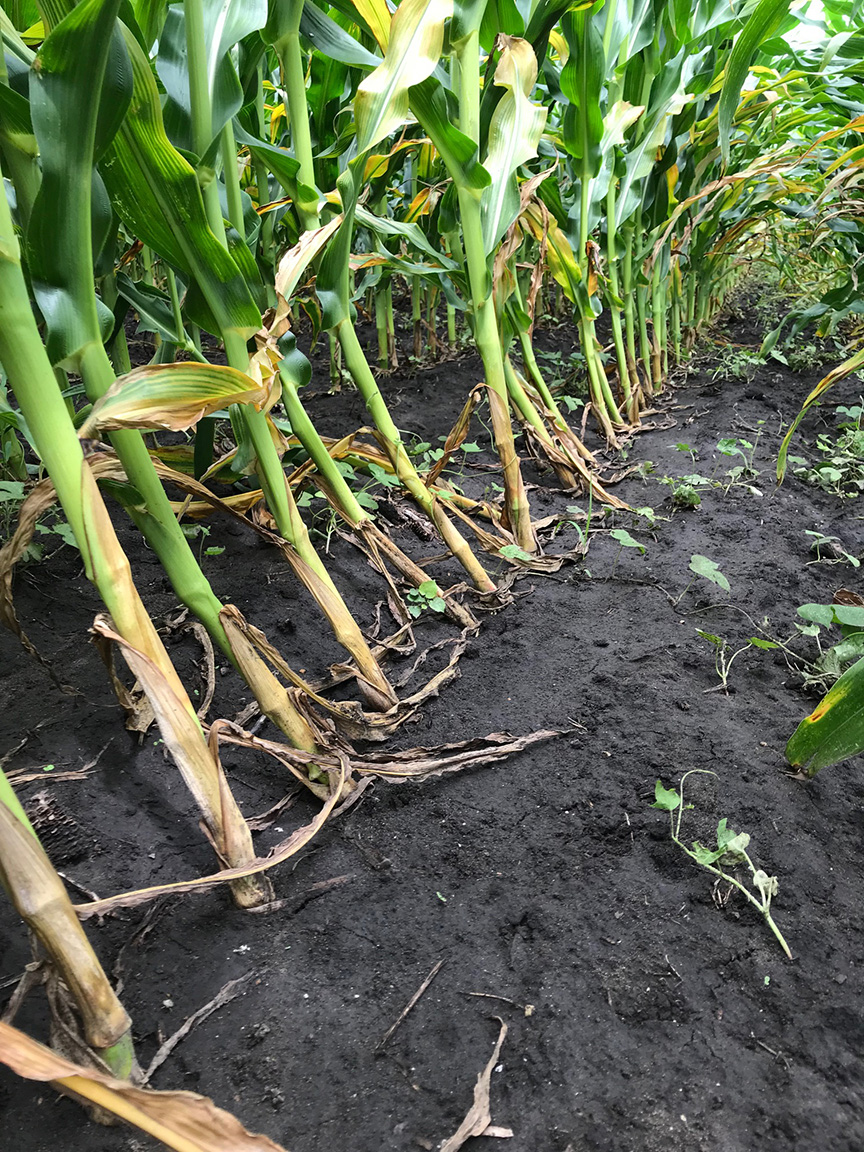
This past week we learned of a producer in a northwestern Indiana county that gambled by not protecting his continuous-corn from rootworm.

This past week we learned of a producer in a northwestern Indiana county that gambled by not protecting his continuous-corn from rootworm.
Our faithful pheromone trappers are back in business, as they are now monitoring for the emergence of western bean cutworm moths from the soil.
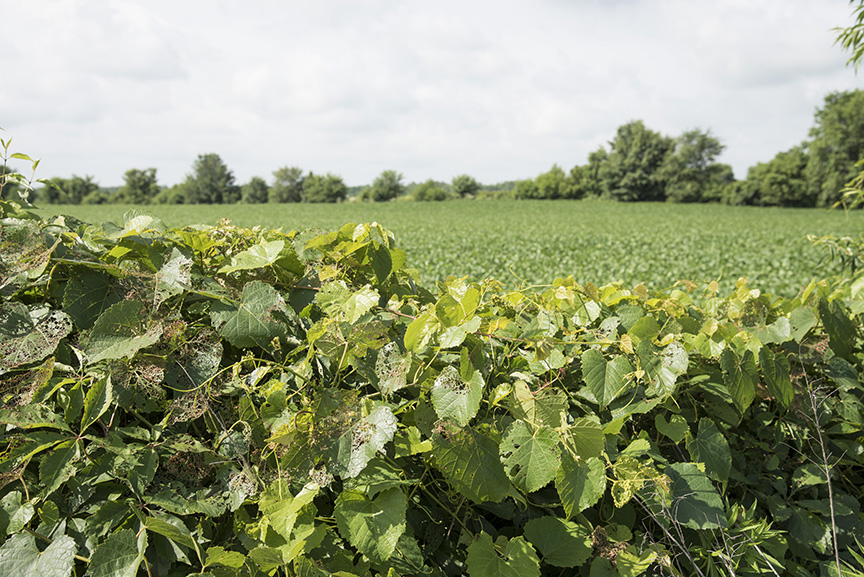
Japanese beetle are emerging and can be seen throughout the state on corn and soybean plants.
2018 Western Bean Cutworm Pheromone Trap Report
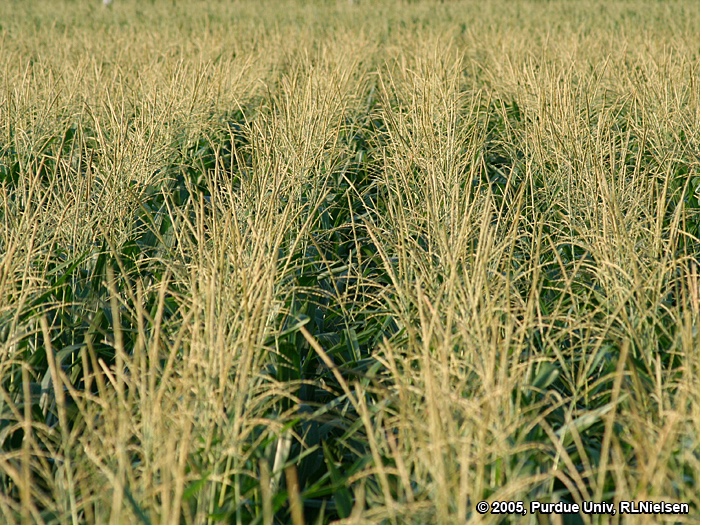
Depending on the year, Indiana’s corn crop typically enters the critical flowering stages of pollen shed and silk emergence sometime between late June to late July.
Intense rainfall events (technically referred to as “toad stranglers” or “goose drownders”) flood low-lying corn fields and create ponding (standing water) in poorly drained areas (depressions, compacted soil) within other fields.
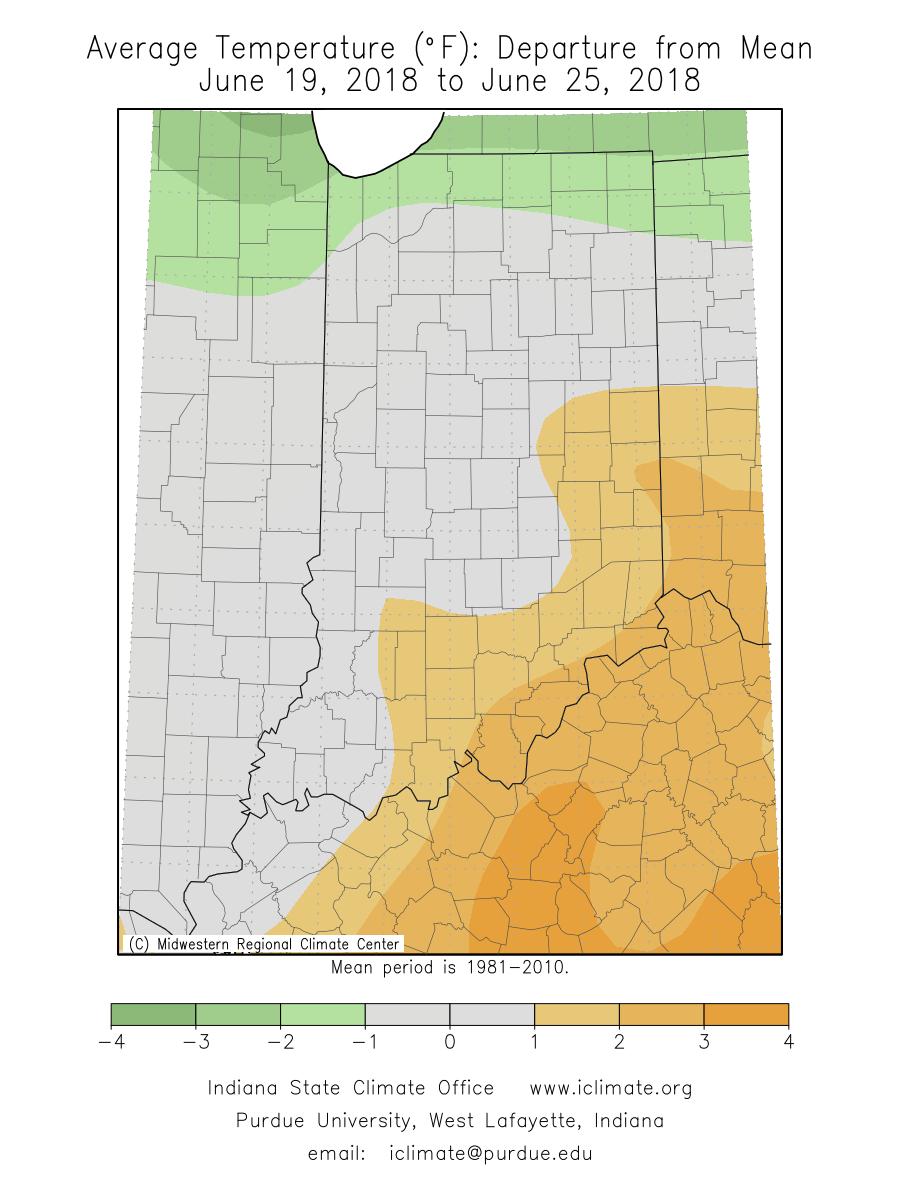
Average Temperature Departure from Mean June 19-25, 2018
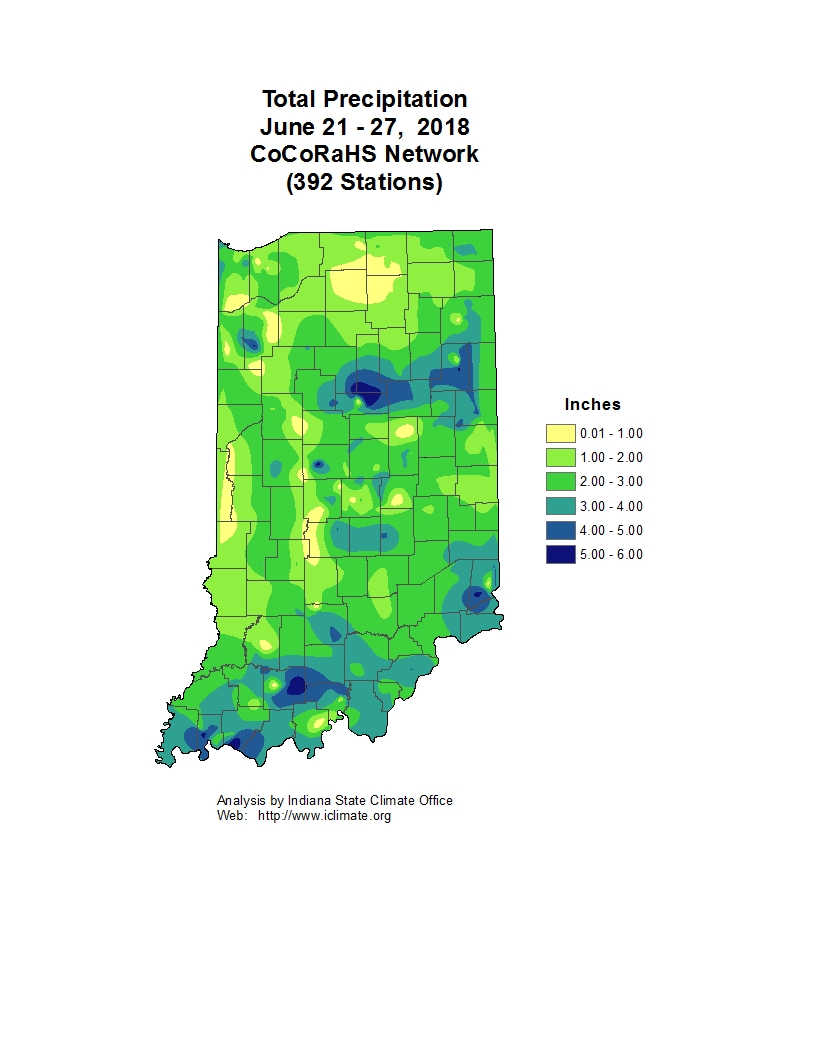
Total Precipitation June 21-27, 2018

Many people have commented that we have the best stands of corn and soybean across the state that we have seen in many years.
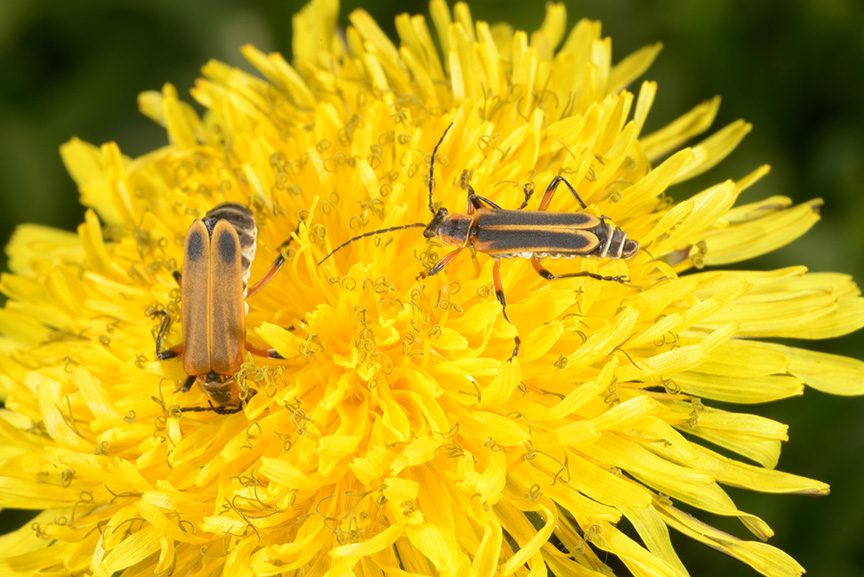
https://extension.entm.purdue.edu/newsletters/pestandcrop/wp-content/uploads/sites/2/2018/06/Figure-31.jpg
© 2025 Purdue University | An equal access/equal opportunity university | Copyright Complaints | Maintained by Pest&Crop newsletter
If you have trouble accessing this page because of a disability, please contact Pest&Crop newsletter at luck@purdue.edu.